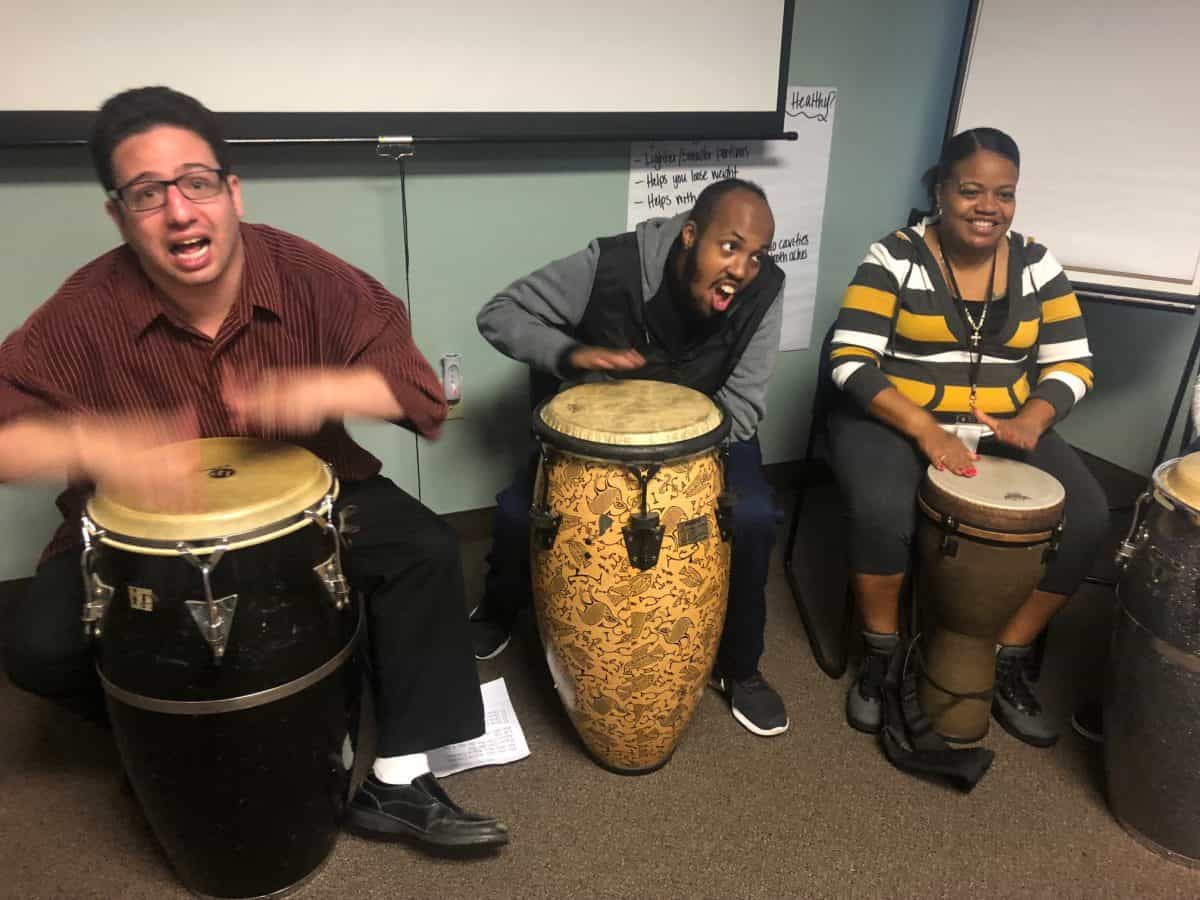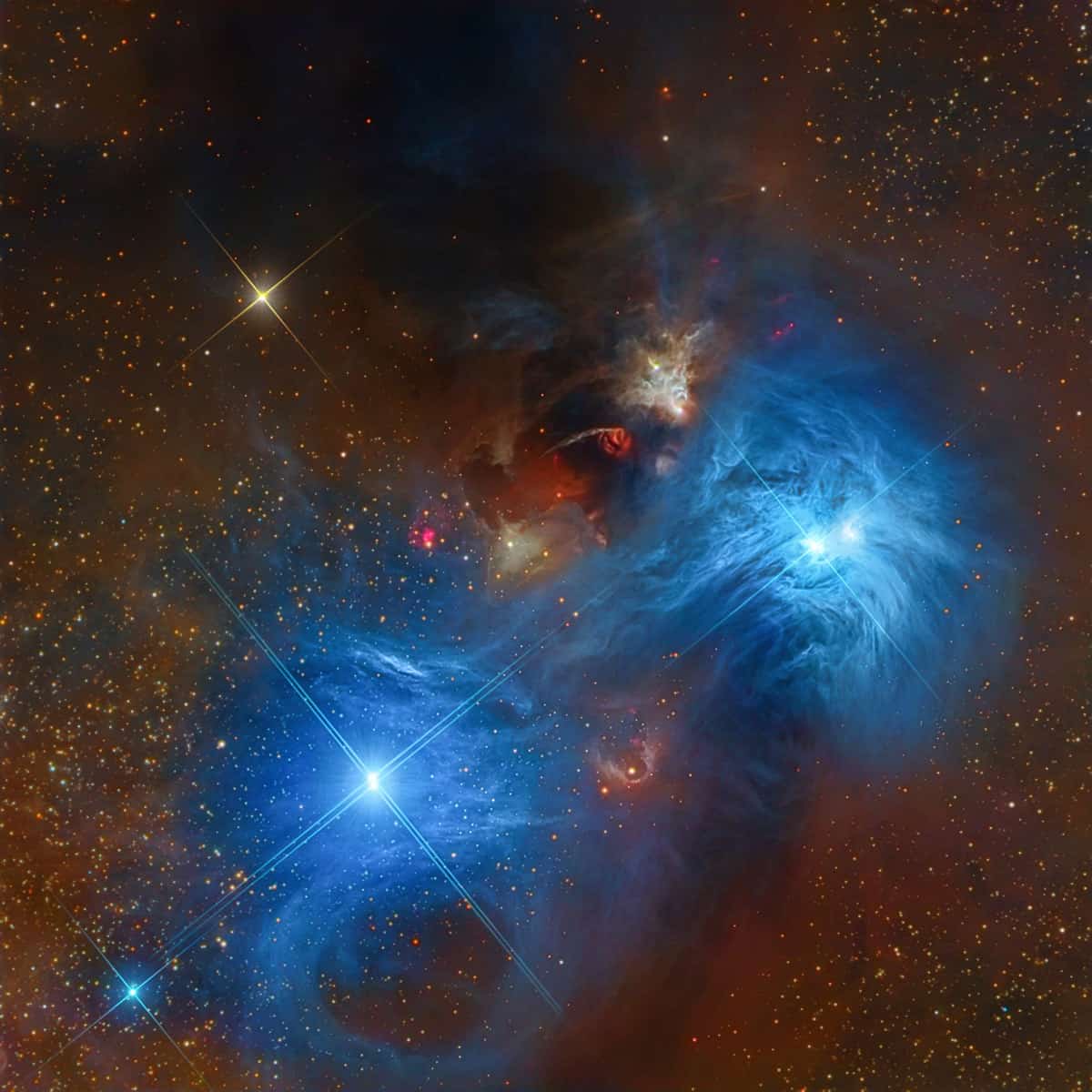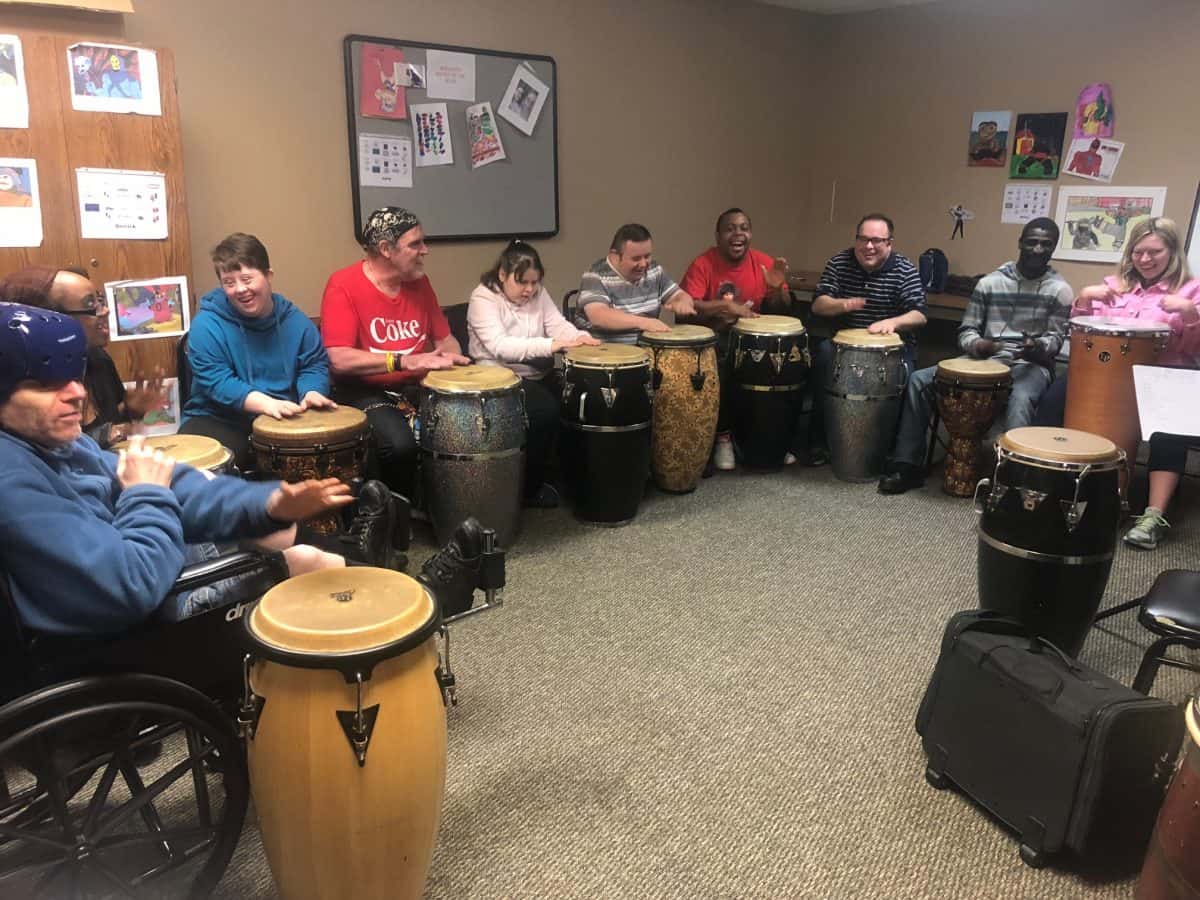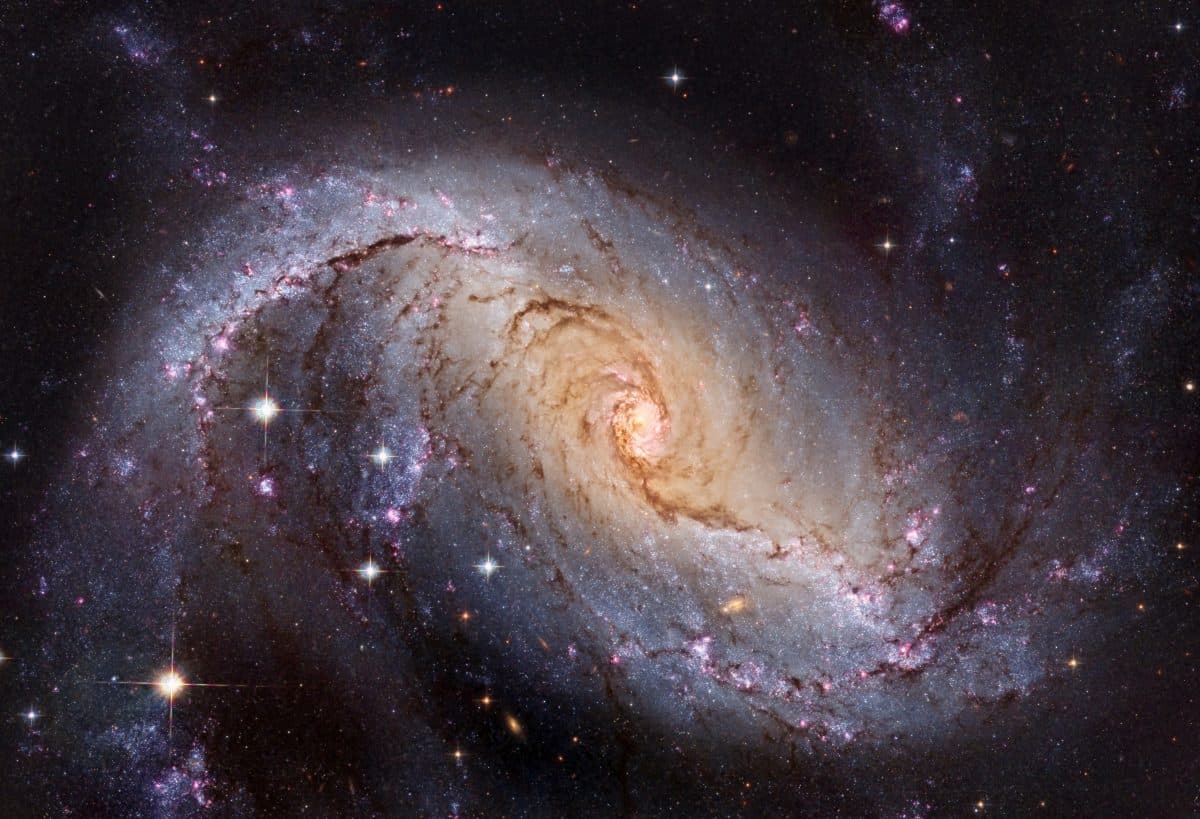Blog
Billy Higgins (October 11, 1936 – May 3, 2001) was an American jazz drummer. He played mainly free jazz and hard bop.
In his career, he played on over 700 recordings, including recordings of rock and funk. He appeared as a jazz drummer in the 2001 movie Southlander.
more...Arthur “Art” Blakey (October 11, 1919 – October 16, 1990) was an American jazz drummer and bandleader. He was known as Abdullah Ibn Buhaina after he became a Muslim.
Blakey made a name for himself in the 1940s in the big bands of Fletcher Henderson and Billy Eckstine. He worked with bebop musicians Thelonious Monk, Charlie Parker and Dizzy Gillespie. In the mid-1950s Horace Silver and Blakey formed the Jazz Messengers, a group that the drummer was associated with for the next 35 years. The group was formed as a collective of contemporaries, but over the years the band became known as an incubator for young talent, including Freddie Hubbard, Wayne Shorter, Lee Morgan, Benny Golson, and Wynton Marsalis. The Biographical Encyclopedia of Jazz calls the Jazz Messengers “the archetypal hard bop group of the late 50s”.
He was inducted into the Down Beat Jazz Hall of Fame (in 1981), the Grammy Hall of Fame (in 1998 and 2001), and was awarded the Grammy Lifetime Achievement Award in 2005. He was inducted into the Modern Drummer Hall of Fame in 1991.
Blakey was born on October 11, 1919, in Pittsburgh, Pennsylvania, probably to a single mother who died shortly after his birth, and her name is often cited as Marie Roddicker (or Roddericker) although Blakey’s own 1937 marriage license shows her maiden name to have been Jackson. His biological father was Bertram Thomas Blakey, originally of Ozark, Alabama, whose family migrated northward to Pittsburgh sometime between 1900 and 1910. Blakey’s uncle, Rubi Blakey, was a popular Pittsburgh singer, choral leader, and teacher who attended Fisk University
more...Bambara region of Mali
more...Rhythm Roots Workshop returns to PRI Partnership Resources Inc in Minneapolis. 1130am-130pm
The last Drumming rehearsal session for MIA Minneapolis Institute of Art “Expressing Me” showcase on October 19th.
Drumming for the Developmentally Disabled community.
With Geordy, Mohammed and Yvette.
more...NGC 6726 in Corona Australis
This beautiful star forming region in the constellation Corona Australis has so much to offer, with many outstanding nebula and unusual objects. One of the more dynamic and colorful areas in the southern sky. There is an annotated image for reference.
It features NGC 2726-27 a blue reflection nebula which are clouds of interstellar dust lit up by the bright nearby stars and IC 4812 is another.
NGC 6729 is the diamond shaped object which is an Emission/Reflection nebula object that is also a variable nebula.
Bernes 157 and SL 41 are areas called Dark Nebula interstellar clouds that are dense enough to obscure the light from behind.
Herbig-Haro or HH objects are small patches of nebulosity linked to new born stars. Stars that are or have ejected gas and that gas collides with nearby clouds of gas at enormous speeds. There are many of these objects in this image.
Telescope: 16″ RCOS, FLI 16803, Planewave 200HR CTIO Chile.
21 Hours Luminance, 14.5 Red, 13.5 Green, 13.5 Blue
62 Hours Total
more...Julian Clifford Mance, Jr. (known as Junior Mance, born October 10, 1928) is an American jazz pianist and composer.
Mance was born in Evanston, Illinois. When he was five years old, Mance started playing piano on an upright in his family’s home in Evanston. His father, Julian, taught Mance to play stride piano and boogie-woogie.
Charlie Parker encouraged Mance to move to New York, which he did after saving money from working nearly a year at the Bee Hive. In 1954, Mance was asked to record with Dinah Washingtonafter Wynton Kelly was drafted. Mance toured with Washington over the next two years and learned accompaniment technique from Washington’s arranger, Jimmy Jones. EmArcy released two LPs, Dinah Jams and Jam Session, from a live session recorded August 14–15, 1954 in Los Angeles with Mance, Washington, Clifford Brown, Clark Terry, Maynard Ferguson, Herb Geller, Harold Land, Richie Powell, Keter Betts, George Morrow, and Max Roach.
https://www.youtube.com/watch?v=6zEK76RHR4g
more...Edward Joseph Blackwell (October 10, 1929 – October 7, 1992) was an American jazz drummer born in New Orleans, Louisiana, known for his extensive, influential work with Ornette Coleman.
Blackwell’s early career began in New Orleans in the 1950s. He played in a bebop quintet that included pianist Ellis Marsalis and clarinetist Alvin Batiste. There was also a brief stint touring with Ray Charles. The second line parade music of New Orleans greatly influenced Blackwell’s drumming style and could be heard in his playing throughout his career.
Blackwell first came to national attention as the drummer with Ornette Coleman‘s quartet around 1960, when he took over for Billy Higgins in the quartet’s stand at the Five Spot in New York City. He is known as one of the great innovators of the free jazz of the 1960s, fusing New Orleans and African rhythms with bebop. In the 1970s and 1980s Blackwell toured and recorded extensively with fellow Ornette Quartet veterans Don Cherry, Charlie Haden, and Dewey Redman in the quartet Old and New Dreams.
https://www.youtube.com/watch?v=j7uJc5g12Q0
more...Thelonious Sphere Monk (/θəˈloʊniəs/, October 10, 1917 – February 17, 1982 Rocky Mt, NC) was an American jazz pianist and composer. He had a unique improvisational style and made numerous contributions to the standard jazz repertoire, including “‘Round Midnight“, “Blue Monk“, “Straight, No Chaser“, “Ruby, My Dear“, “In Walked Bud“, and “Well, You Needn’t“. Monk is the second-most-recorded jazz composer after Duke Ellington, which is particularly remarkable as Ellington composed more than a thousand pieces, whereas Monk wrote about 70.
Monk’s compositions and improvisations feature dissonances and angular melodic twists and are consistent with his unorthodox approach to the piano, which combined a highly percussive attack with abrupt, dramatic use of switched key releases, silences, and hesitations. His style was not universally appreciated; the poet and jazz critic Philip Larkin dismissed him as ‘the elephant on the keyboard’.
Monk was renowned for a distinct look which included suits, hats, and sunglasses. He was also noted for an idiosyncratic habit during performances: while other musicians continued playing, Monk stopped, stood up and danced for a few moments before returning to the piano.
Monk is one of five jazz musicians to have been featured on the cover of Time magazine. The others are Louis Armstrong, Dave Brubeck, Duke Ellington and Wynton Marsalis.
In his early teens, Monk toured with an evangelist, playing the church organ, and in his late teens he began to find work playing jazz. In the early to mid-1940s, he was the house pianist at Minton’s Playhouse, a Manhattan nightclub. Much of Monk’s style (in the Harlem stride tradition) was developed during his time at Minton’s, when he participated in after-hours cutting contests, which featured many leading jazz soloists of the time. Monk’s musical work at Minton’s was crucial in the formulation of bebop, which would be furthered along by other artists, including Dizzy Gillespie, Charlie Christian, Kenny Clarke, Charlie Parker, and, later, Miles Davis.[ Monk is believed to be the pianist featured on recordings Jerry Newman made around 1941 at the club. Monk’s style at this time was later described as “hard-swinging,” with the addition of runs in the style of Art Tatum. Monk’s stated influences included Duke Ellington, James P. Johnson, and other early stride pianists. In the documentary Thelonious Monk: Straight, No Chaser, it is stated that Monk lived in the same neighborhood in New York City as Johnson and knew him as a teenager.
more...https://www.youtube.com/watch?v=Pero2scoMXc&t=0s&index=13&list=PLEB3LPVcGcWbHKyo-uy8CkVvebHEsluVK
more...https://www.youtube.com/watch?v=Pero2scoMXc&t=0s&index=13&list=PLEB3LPVcGcWbHKyo-uy8CkVvebHEsluVK
more...https://www.youtube.com/watch?v=4AwmaO7jkzA
more...https://www.youtube.com/watch?v=4AwmaO7jkzA
more...Rhythm Roots Workshop returns to PRI Partnership Resources Inc in St Louis Park. 1130am-130pm
The last Drumming rehearsal session for MIA Minneapolis Institute of Art “Expressing Me” showcase on October 19th.
Drumming for the Developmentally Disabled community.
“Chicka Boom Chicka Boom” group with Frank, Anastasia, Ryann, Brian, Erica, Marco, Deion, Mike, Nymeh and Annie.
more...Many spiral galaxies have bars across their centers. Even our own Milky Way Galaxy is thought to have a modest central bar. Prominently barred spiral galaxy NGC 1672, featured here, was captured in spectacular detail in an image taken by the orbiting Hubble Space Telescope. Visible are dark filamentary dust lanes, young clusters of bright blue stars, red emission nebulas of glowing hydrogen gas, a long bright bar of stars across the center, and a bright active nucleus that likely houses a supermassive black hole. Light takes about 60 million years to reach us from NGC 1672, which spans about 75,000 light years across. NGC 1672, which appears toward the constellation of the Dolphinfish (Dorado), is being studied to find out how a spiral bar contributes to star formation in a galaxy’s central regions.
more...
John Winston Ono Lennon MBE (9 October 1940 – 8 December 1980) was an English singer, songwriter, and peace activist who co-founded the Beatles, the most commercially successful band in the history of popular music. He and fellow member Paul McCartney formed a much-celebrated songwriting partnership. Along with George Harrison and Ringo Starr, the group would ascend to worldwide fame during the 1960s.
He was born as John Winston Lennon in Liverpool, where he became involved in the skiffle craze as a teenager. In 1957, he formed his first band, the Quarrymen, which evolved into the Beatles in 1960. Lennon began to record as a solo artist before the band’s break-up in April 1970; two of those songs were “Give Peace a Chance” and “Instant Karma!” Lennon subsequently produced albums that included John Lennon/Plastic Ono Band and Imagine, and songs such as “Working Class Hero“, “Imagine” and “Happy Xmas (War Is Over)“. After he married Yoko Ono in 1969, he added “Ono” as one of his middle names. Lennon disengaged himself from the music business in 1975 to raise his infant son Sean, but re-emerged with Ono in 1980 with the album Double Fantasy. He was shot and killed in the archway of his Manhattan apartment building three weeks after the album was released.
Lennon revealed a rebellious nature and acerbic wit in his music, writing, drawings, on film and in interviews. Controversial through his political and peace activism, he moved from London to Manhattan in 1971, where his criticism of the Vietnam War resulted in a lengthy attempt by the Nixon administration to deport him. Some of his songs were adopted as anthems by the anti-war movement and the larger counterculture.
By 2012, Lennon’s solo album sales in the United States had exceeded 14 million units. He had 25 number-one singles on the US Billboard Hot 100chart as a writer, co-writer, or performer. In 2002, Lennon was voted eighth in a BBC poll of the 100 Greatest Britons and in 2008, Rolling Stoneranked him the fifth-greatest singer of all time. In 1987, he was posthumously inducted into the Songwriters Hall of Fame. Lennon was twice posthumously inducted into the Rock and Roll Hall of Fame: first in 1988 as a member of the Beatles and again in 1994 as a solo artist.
more...Kenny Garrett (born October 9, 1960) is a Grammy Award-winning American post-bop jazz saxophonist and flautist who gained recognition in his youth as a member of the Duke Ellington Orchestra and of Miles Davis‘s band. Since then, he has pursued a solo career.
Kenny Garrett was born in Detroit, Michigan, on October 9, 1960; he is a 1978 graduate of Mackenzie High School.[citation needed] His father was a carpenter who played tenor saxophone as a hobby. Garrett’s own career as a saxophonist took off when he joined the Duke Ellington Orchestra in 1978, then led by Duke’s son, Mercer Ellington. A few years later he performed in the Mel Lewis Orchestra, playing the music of Thad Jones, and also the Dannie Richmond Quartet, focusing on Charles Mingus‘s music.
In 1984, he recorded his first album as a bandleader, Introducing Kenny Garrett, on the CrissCross label. He then recorded two albums with Atlantic Records: Prisoner of Love and African Exchange Student. Since 1990 the majority of Garrett albums are co-produced by pianist/composer Donald Brown. Garrett signed to the Warner Bros. Records label, and beginning with Black Hope, in 1992, he has continued to record with them. Among his recordings on Warner Bros. are Pursuance: The Music of John Coltrane, recorded in 1996, and Songbook, his first album made up entirely of his own compositions, recorded in 1997 and nominated for a Grammy Award. During his career, Garrett has performed and recorded with many jazz greats such as Miles Davis, Art Blakey, Joe Henderson, Brad Mehldau, Freddie Hubbard, Woody Shaw, McCoy Tyner, Pharoah Sanders, Brian Blade, Marcus Miller, Chick Corea, John McLaughlin, Herbie Hancock, Bobby Hutcherson, Ron Carter, Elvin Jones, and Mulgrew Miller. Throughout his solo career, Garrett’s music has varied stylistically from jazz and post-bop.
more...Abdullah Ibrahim (born Adolph Johannes Brand on 9 October 1934 and formerly known as Dollar Brand) is a South African pianist and composer. His music reflects many of the musical influences of his childhood in the multicultural port areas of Cape Town, ranging from traditional African songs to the gospel of the AME Church and ragas, to more modern jazz and other Western styles. Ibrahim is considered the leading figure in the subgenre of Cape jazz. Within jazz, his music particularly reflects the influence of Thelonious Monk and Duke Ellington. He is known especially for “Mannenberg“, a jazz piece that became a notable anti-apartheid anthem.
During the apartheid era in the 1960s Ibrahim moved to New York City and, apart from a brief return to South Africa in the 1970s, remained in exile until the early ’90s. Over the decades he has toured the world extensively, appearing at major venues either as a solo artist or playing with other renowned musicians, including Max Roach, Carlos Ward and Randy Weston, as well as collaborating with classical orchestras in Europe. With his wife, the jazz singer Sathima Bea Benjamin, he is father to the New York underground rapper Jean Grae, as well as to a son, Tsakwe.
Ibrahim was born in Cape Town on 9 October 1934, and was baptized Adolph Johannes Brand. He attended Trafalgar High School in Cape Town’s District Six, and began piano lessons at the age of seven, making his professional debut at 15. He is of mixed-race heritage, making him a Coloured person according to the South African government.His mother played piano in a church, the musical style of which would remain an influence; in addition, he learned to play several genres of music during his youth in Cape Town, including marabi, mbaqanga, and American jazz. He became well known in jazz circles in Cape Town and Johannesburg. In 1959 and 1960, Ibrahim played with the Jazz Epistles group in Sophiatown, alongside saxophonist Kippie Moeketsi, trumpeter Hugh Masekela, trombonist Jonas Gwangwa (who were all in the orchestra of the musical King Kong that opened in Johannesburg in February 1959), bassist Johnny Gertze and drummer Makaya Ntshoko; in January 1960, the six musicians went into the Gallo studio and recorded the first full-length jazz LP by Black South African musicians, Jazz Epistle Verse One, with 500 copies being produced. Although the group avoided explicitly political activity, the apartheid government was suspicious of it and other jazz groups, and targeted them heavily during the increase in state repression following the Sharpeville massacre, and eventually, the Jazz Epistles broke up.
more...Yusef Abdul Lateef (born William Emanuel Huddleston; October 9, 1920 – December 23, 2013) was an American jazz multi-instrumentalist, composer and prominent figure among the Ahmadiyya Community in America, in 1950.
Although Lateef’s main instruments were the tenor saxophone and flute, he also played oboe and bassoon, both rare in jazz, and also used a number of non-western instruments such as the bamboo flute, shanai, shofar, xun, arghul and koto. He is known for having been an innovator in the blending of jazz with “Eastern” music. Peter Keepnews, in his New York Times obituary of Lateef, wrote that the musician “played world music before world music had a name.”
Lateef wrote and published a number of books including two novellas entitled A Night in the Garden of Love and Another Avenue, the short story collections Spheres and Rain Shapes, also his autobiography, The Gentle Giant, written in collaboration with Herb Boyd. Along with his record label YAL Records, Lateef owned Fana Music, a music publishing company. Lateef published his own work through Fana, which includes Yusef Lateef’s Flute Book of the Blues and many of his own orchestral compositions.
Lateef was born in Chattanooga, Tennessee. His family moved, in 1923, to Lorain, Ohio, and again in 1925, to Detroit, Michigan, where his father changed the family’s name to “Evans”.
Throughout his early life Lateef came into contact with many Detroit-based jazz musicians who went on to gain prominence, including vibraphonist Milt Jackson, bassist Paul Chambers, drummer Elvin Jones and guitarist Kenny Burrell. Lateef was a proficient saxophonist by the time of his graduation from high school at the age of 18, when he launched his professional career and began touring with a number of swing bands. The first instrument he bought was an alto saxophone but after a year he switched to the tenor saxophone, influenced by the playing of Lester Young.
https://www.youtube.com/watch?v=TrK9fJpfw9U
more...More Posts
- Rubim de Toledo Day
- Phil Woods Day
- World Music with Åse Teigland
- Daily Roots with Earl Zero
- Happy All Saints Day 2018
- The Cosmos with HBC 672
- Lyle Lovett Day
- Lou Donaldson Day
- world Music with Danças Ocultas
- Daily Roots with Burning Spear
- The Cosmos with PSR B1509-58
- Booker Ervin Day
- Illinois Jacquet Day
- Ethel Waters Day
- World Music with The Afrobeat Sudan Aid Project Funk Soul Highlife Music Compilation
- Daily Roots with Whirimako Black
- The Cosmos with M64
- Trilok Gurtu Day
- Pancho Sanchez Day
- Clifford Brown Day



